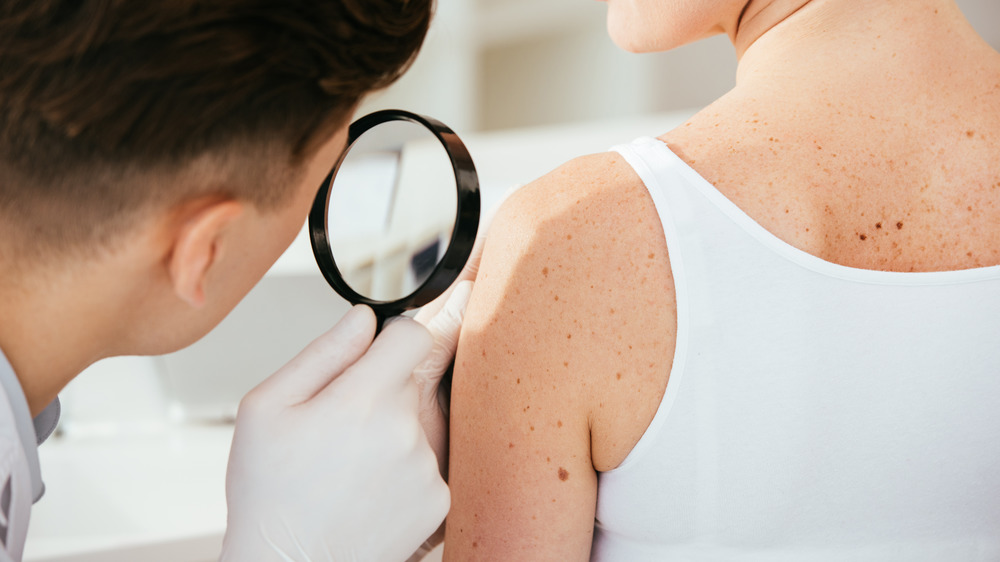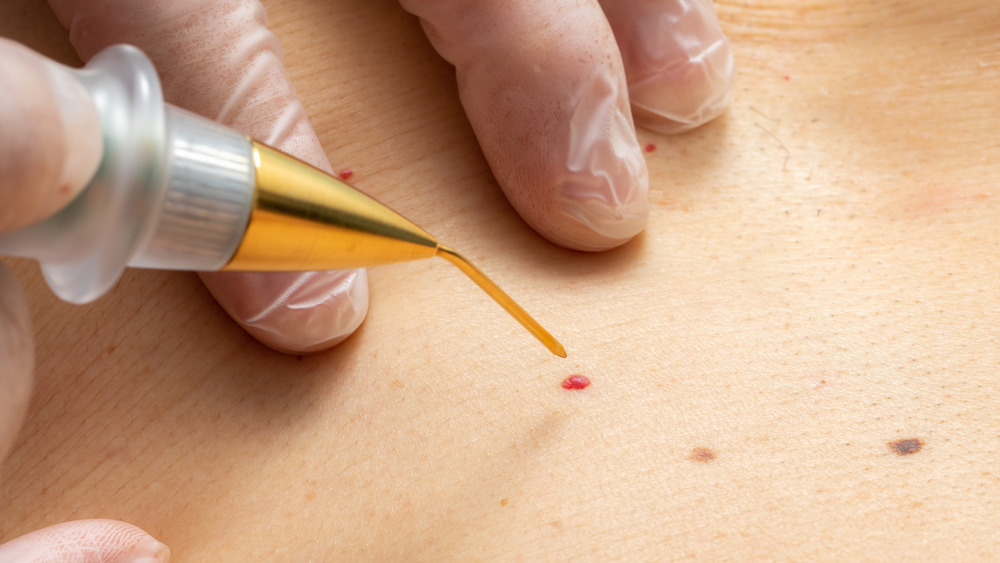This Is What Those Red Marks On Your Skin Really Mean
Our skin is susceptible to many changes, caused by aging, acne, or a harsh sunburn for example. While none of these are our favorite things, they are inevitable. And there is some comfort in knowing what that new line is (hello, wrinkle) or why you suddenly break out (hello, hormones). That is why when you suddenly wake up with an unidentifiable red mark on your skin, there is no comfort to be found. Have no fear, we're here to tell you what those red marks on your skin really are.
Before you sound the cancer alarm, take a breath. That small dot that is reddish in hue is a completely benign phenomenon called a cherry angioma. Dr. Jessie Cheung, a board-certified dermatologist and founder of Cheung Aesthetic and Wellness goes into detail telling Byrdie, "Cherry angiomas are small, bright red bumps, made up of clusters of blood vessels," she explains. "They are harmless and don't hurt, but can bleed if scratched." She goes on to note that they can be found anywhere on the skin, but most often appear on the chest, abdomen, back, arms, and legs.
It is not fully understood why they suddenly appear
Now that we can breathe a big sigh of relief in knowing they are benign, we can get into the details, starting with why they suddenly appear. Hadley King, MD, a board-certified dermatologist who specializes in medical and cosmetic dermatology, tells Byrdie, "We don't know the exact cause, but there is a genetic factor that makes some people more likely to get them," she says. Age, hormones, and pregnancy have also been known to play a role in why we get them. If you're wondering what gives them their cherry-red color, Healthline explains it is from the assemblage of small blood cells inside the formation. And while you don't need to have them removed, you can, through treatments like electrocauterization, laser surgery, or a shave excision.
We're pleased to report these small red dots are harmless to our health. But as with any new skin growth, make an appointment to talk with your physician if you have concerns, or see the growth growing or changing abnormally.


